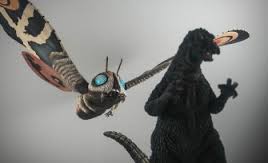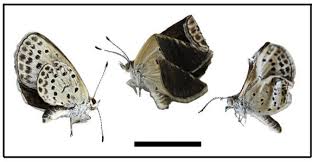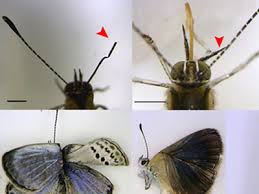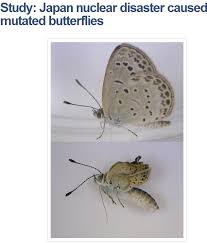It looks like you're using an Ad Blocker.
Please white-list or disable AboveTopSecret.com in your ad-blocking tool.
Thank you.
Some features of ATS will be disabled while you continue to use an ad-blocker.
share:
Well, as much as this IS news, it's old. Here's an article from 2012
Aaaaaaaaaaaaaaaaaaaaaaaaaaand.........here's the pic:
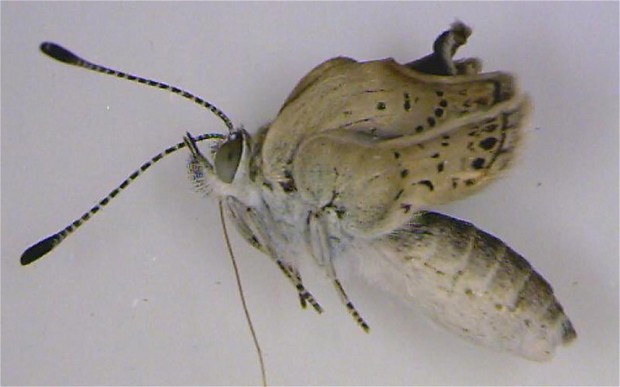
And this is what they're supposed to look like:
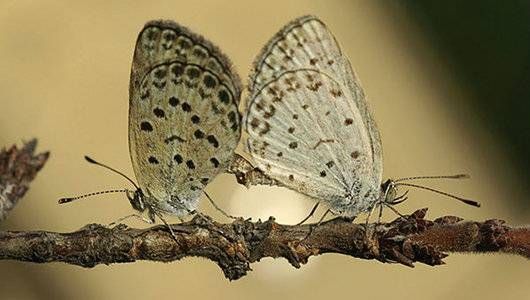
10:11AM BST 14 Aug 2012
Around 12 per cent of pale grass blue butterflies that were exposed to nuclear fallout as larvae immediately after the tsunami-sparked disaster had abnormalities, including smaller wings and damaged eyes, researchers said.
The insects were mated in a laboratory well outside the fallout zone and 18 per cent of their offspring displayed similar problems, said Joji Otaki, associate professor at Ryukyu University in Okinawa, southwestern Japan.
That figure rose to 34 per cent in the third generation of butterflies, he said, even though one parent from each coupling was from an unaffected population.
The researchers also collected another 240 butterflies in Fukushima in September last year, six months after the disaster. Abnormalities were recorded in 52 per cent, which was "a dominantly high ratio", Otaki told AFP.
www.telegraph.co.uk...
Aaaaaaaaaaaaaaaaaaaaaaaaaaand.........here's the pic:

And this is what they're supposed to look like:

edit on 3-2-2016 by StoutBroux because: (no reason given)
a reply to: StoutBroux
You can see from the abdomen, that it seems too thick. it is possible, that the one in the upper picture is just hatched, and not mutated, when they hatch, the belly is thicker, and the wings are curled up..
I am thinking, that someone just wants to create media hype, but anything is possible, even mutated butterflies.
You can see from the abdomen, that it seems too thick. it is possible, that the one in the upper picture is just hatched, and not mutated, when they hatch, the belly is thicker, and the wings are curled up..
I am thinking, that someone just wants to create media hype, but anything is possible, even mutated butterflies.
a reply to: HD3DSURROUNDSOUND
This is a little bit of click bait...Seriously...you say "Mutant Butterflies"...who the hell isn't going to want to see pics?
This is a little bit of click bait...Seriously...you say "Mutant Butterflies"...who the hell isn't going to want to see pics?
originally posted by: stinkelbaum
the chernobyl site, a much worse accident will be uninhabitable for around 20'000 years.
highest iodine detected at chernobyl 1'920'000 tbq, caesium 111'000 tbq, 300 svh rads
highest iodine detected at fukushima 700'000 tbq, caesium 70'000 tbq, 72.9 svh (radiation)
you do the math as to when fukushima's safe.
The ocean water is constantly diluting the effects of Fukushima. You can't take proper measurements to compare the two at the sight when Chernobyl is inland where the radioactivity isn't diluted by anything other than the atmosphere and ground around it so it's going to read higher, whereas Fukushima has the Pacific ocean constantly being poured onto it and diluted out to sea. No comparison. Fukushima is way worse. They can't simply contain it.
new topics
-
Federal law trumps state and local law every time
Social Issues and Civil Unrest: 6 hours ago
top topics
-
Federal law trumps state and local law every time
Social Issues and Civil Unrest: 6 hours ago, 13 flags
active topics
-
Interesting Video-UFO?
Aliens and UFOs • 15 • : devilhunter69 -
DOJ Special Counsel Robert HUR Says JOE BIDEN Can Be ARRESTED After Jan 20th 2025.
Above Politics • 24 • : WeMustCare -
Comcast dumping MSNBC
Mainstream News • 33 • : WeMustCare -
International Criminal Court Issues Arrest Warrant For Netanyahu
Mainstream News • 53 • : WeMustCare -
President-Elect DONALD TRUMP's 2nd-Term Administration Takes Shape.
Political Ideology • 252 • : WeMustCare -
The Reactionary Conspiracy 13. The plot’s theology.
General Conspiracies • 314 • : Oldcarpy2 -
Post A Funny (T&C Friendly) Pic Part IV: The LOL awakens!
General Chit Chat • 7830 • : KrustyKrab -
Well, here we go red lines crossed Biden gives the go ahead to use long range missiles
World War Three • 374 • : annonentity -
Anyone like the Scorpions?
Music • 20 • : BasicResearchMethods -
Federal law trumps state and local law every time
Social Issues and Civil Unrest • 17 • : fringeofthefringe

